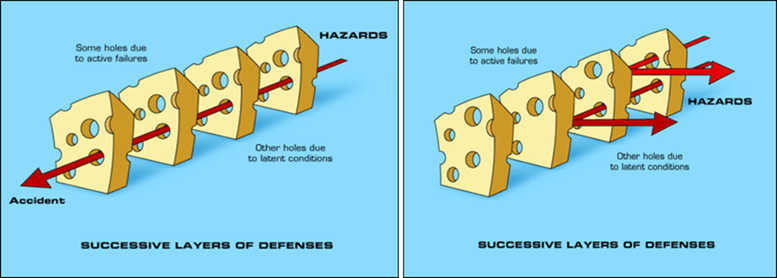Deviations occur when a process or system fails to function as intended, resulting in inefficiencies, errors, defects, or rework that can increase operating costs. By minimizing deviations, organizations can enhance the quality and efficiency of their processes, resulting in reduced operating costs. For instance, decreasing the number of defective products in a manufacturing process can reduce the expenses linked with scrap, rework, complaints, and warranty claims. Similarly, minimizing errors in data entry or processing can decrease the expenses connected with correcting mistakes and addressing customer complaints.
Apart from lowering direct costs, minimizing deviations can boost overall productivity, customer satisfaction, and providing long-term cost advantages. For example, minimizing downtime in a production line can increase throughput and lead to higher revenues, while decreasing customer complaints can boost customer retention and loyalty.
It is important to note that a single process non-conformance can cost $500, while a product recall or a significant compliance violation can cost millions of dollars. Upon analyzing all company deviations, it becomes apparent that many are caused by some degree of human error. Implementing an appropriate strategy to minimize human errors can generate significant financial benefits for your organization.
Minimizing the occurrence of Human Error
1. Start with a good design.
It is quite common that human Errors starts in the development phase of the product, process, or system. A good design will ensure that each detail is added by some person, a designer, carefully thinking through the uses of the device, process or system, the ways that people abuse things, the kinds of errors that can get made, and the functions that people wish to have performed. This is the approach used by the user centered design, a philosophy based on the needs and interest of the user, with an emphasis on making the products usable and understandable.
2. Build layers of defense
The concept of “layers of defense” refers to the idea that multiple barriers or safeguards should be in place to prevent or mitigate the consequences of errors or failures. The goal is to create a system where errors are less likely to occur, and if they do occur, they are caught early and corrected before they cause harm.

Effective layers of defense require a combination of technical and organizational measures, as well as a culture of continuous improvement and learning. By implementing multiple layers of defense, organizations can create a system that is more resilient and better equipped to manage risks and prevent harm.
3. Improve the environment.
Improving the work environment can play a crucial role in minimizing human error by creating a safe and supportive workplace that promotes productivity and reduces the risk of accidents. Some strategies that companies can employ to improve the work environment and minimize human error include:
- Ergonomic Design: Ensuring that workstations and equipment are designed to minimize physical strain and discomfort can reduce the risk of fatigue, distraction, and other factors that can contribute to human error.
- Lighting and Noise Control: Proper lighting and noise control can improve focus and concentration, reducing the risk of errors caused by distraction or sensory overload.
- Workload Management: Managing workload and scheduling tasks appropriately can help prevent fatigue, burnout, and other factors that can contribute to human error.
- Communication and Collaboration: Establishing clear lines of communication and promoting collaboration can help ensure that employees are working together effectively and are able to identify and address potential errors before they occur.
- Supportive Culture: Promoting a culture that prioritizes safety and supports employee well-being can create a work environment where employees feel valued, engaged, and motivated to do their best work. Create a psychological safety environment.
4. Instill accountability at every level.
Go beyond communication to make employees at every level accountable for a commitment to reduce human error. Transforming a culture takes time, effort, and continuous communication. It is important to consistently and frequently dialog with employees about the organization’s commitment to quality, so they know what is expected and feel engaged in the process. Employee engagement is the strength of the mental and emotional connection employees feel toward the work they do, their teams, and their organization.
Most people would like to have a job, a boss, and a workplace they can engage with, as well as work that gives them a sense of purpose. This aspiration is embodied by a famous Steve Jobs statement: “Your work is going to fill a large part of your life, and the only way to be truly satisfied is to do what you believe is great work. And the only way to do great work is to love what you do.”
Also there are just too many external influences that affect employees’ performance, most employee engagement models are centered around the work experience and not on the employees.
When we only try to understand and affect what happens at work, we ignore the most basic tenet of person-organization fit: employees bring their whole selves to work. What happens after the workday may be just as important as what happens during it.
The Takeaway
Understanding the root causes of human error just simply isn’t enough. Implementing strategies to both prevent and mitigate its impact is imperative for any organization that deeply values productivity, product safety & efficacy, and employee well-being. While it may not be possible to completely eliminate human error, by employing these strategies, we can greatly reduce the frequency and impact of errors and allow organizations to create a system that is better equipped to overcome these challenges.


